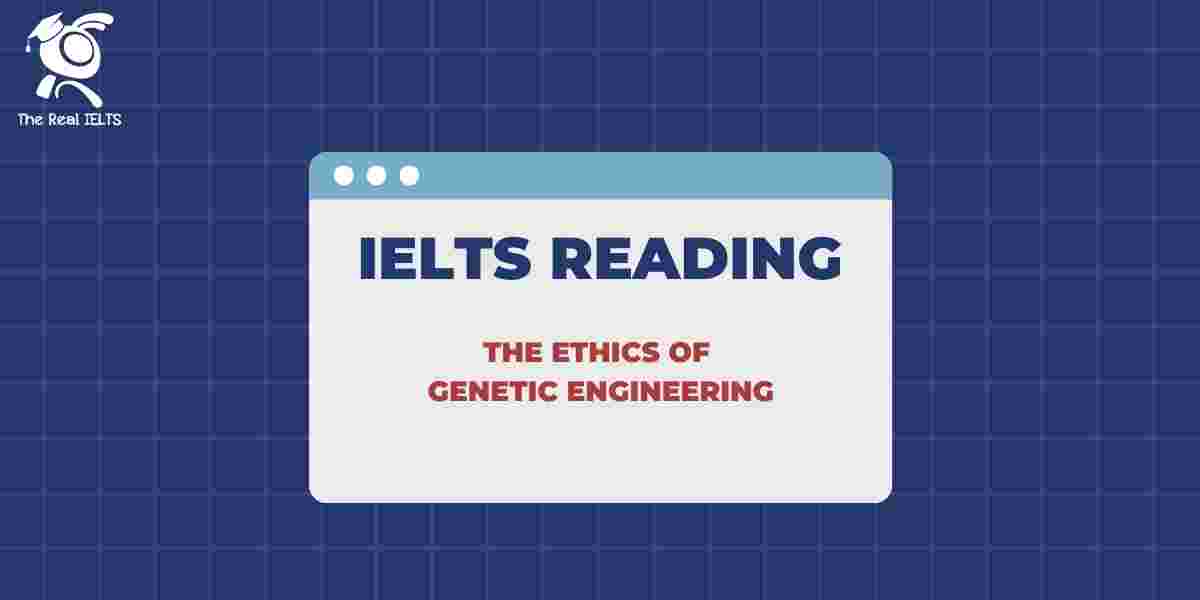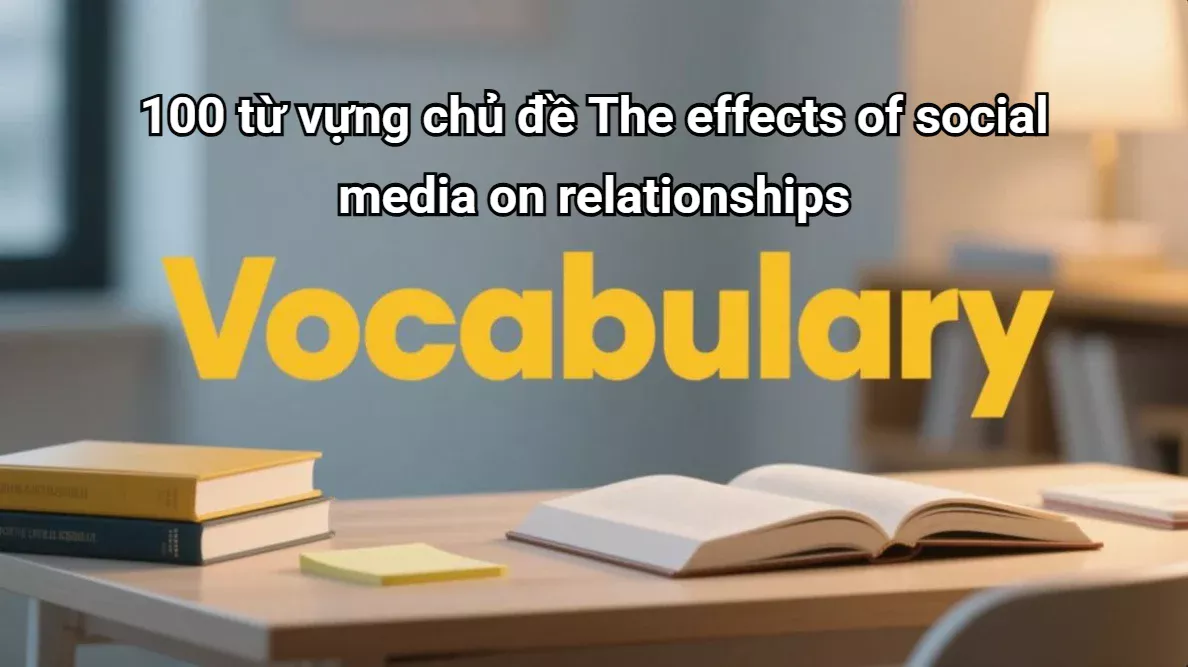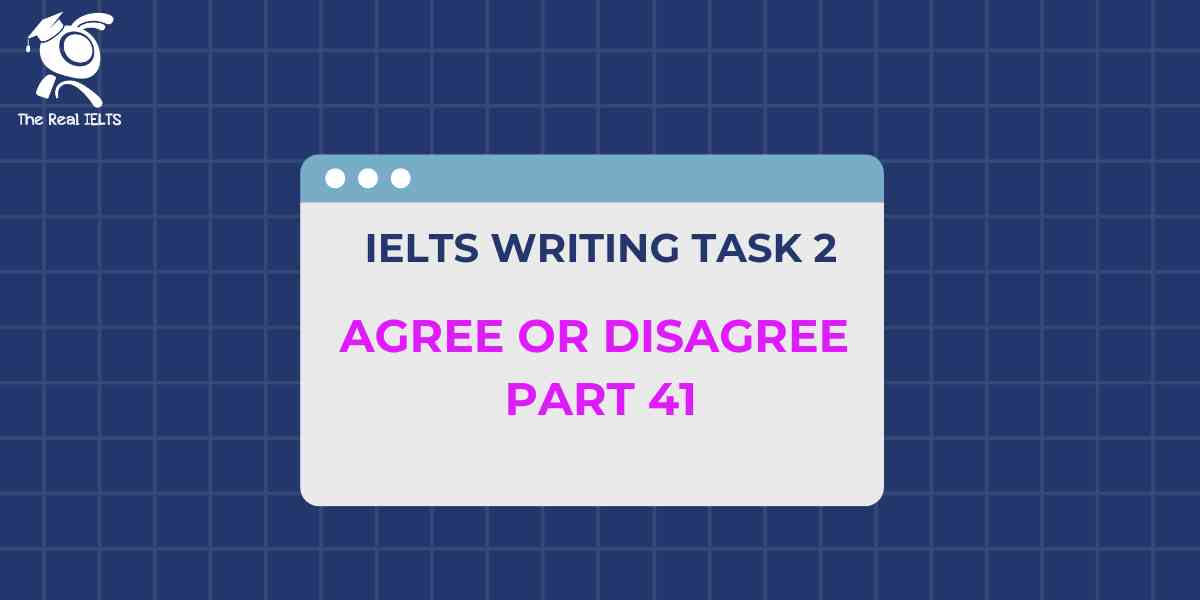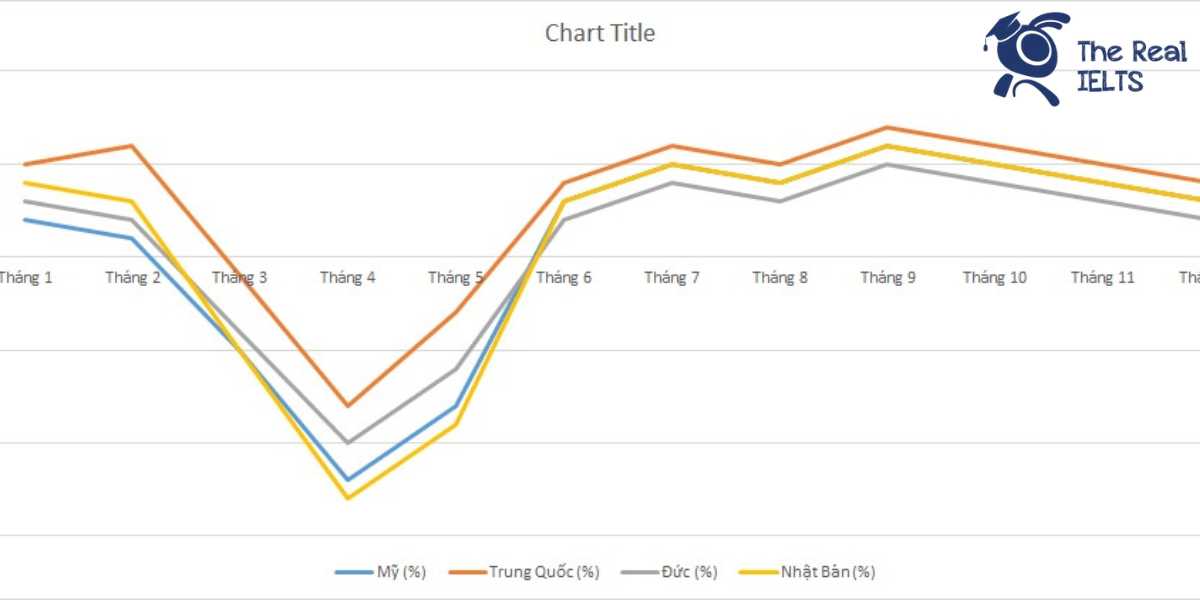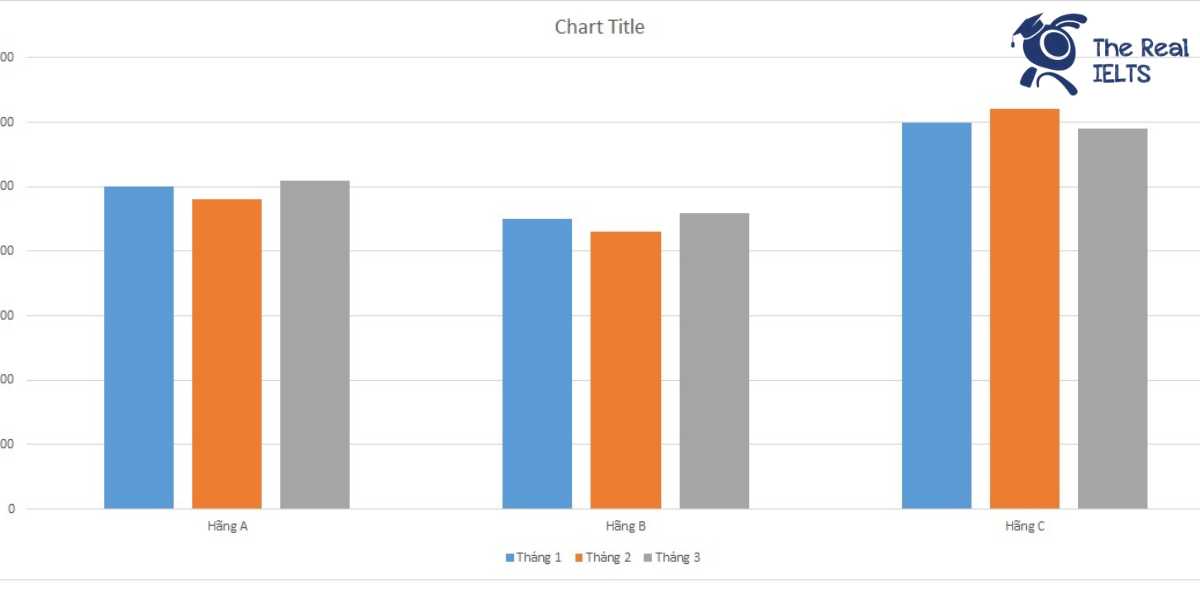Đề thi IELTS Reading có tiêu đề “The Ethics of Genetic Engineering”
Nhớ đọc thêm các bài luyện thi IELTS nhé.
IELTS Reading:”The Ethics of Genetic Engineering“
The Ethics of Genetic Engineering
Genetic engineering, the manipulation of an organism’s genes using biotechnology, has emerged as one of the most promising yet contentious fields of modern science. The capability to alter the genetic makeup of organisms, including humans, holds the potential to revolutionize medicine, agriculture, and numerous other fields. However, with this potential comes a host of ethical concerns that have sparked global debate. As humanity stands on the precipice of these scientific advancements, it is crucial to weigh the benefits against the moral dilemmas posed by genetic engineering.
One of the most compelling arguments in favor of genetic engineering is its potential to eradicate genetic diseases. Through techniques such as CRISPR-Cas9, scientists can now precisely target and modify specific genes, offering the possibility of curing inherited conditions that have plagued families for generations. Diseases such as cystic fibrosis, sickle cell anemia, and Huntington’s disease could potentially be eliminated from the gene pool. This would not only improve the quality of life for countless individuals but also reduce the burden on healthcare systems worldwide. The prospect of a world where parents no longer have to fear passing on debilitating genetic conditions to their children is undoubtedly enticing.
In agriculture, genetic engineering promises to address global food security issues. By creating crops that are more resistant to pests, diseases, and environmental conditions, scientists can help ensure a stable food supply for the growing global population. Genetically modified organisms (GMOs) have the potential to produce higher yields with fewer inputs, making farming more efficient and sustainable. Additionally, biofortified crops, which are engineered to contain higher levels of essential nutrients, could play a crucial role in combating malnutrition in developing countries. These advancements, if managed responsibly, could significantly contribute to alleviating hunger and improving global health.
Despite these promising benefits, the ethical implications of genetic engineering cannot be ignored. One of the most significant concerns is the potential for unintended consequences. The manipulation of genes is a complex process, and even with the most precise tools, there is always a risk of off-target effects that could lead to unforeseen health issues or environmental damage. The long-term impact of releasing genetically modified organisms into the ecosystem is still largely unknown, and there is a legitimate fear that tampering with nature at such a fundamental level could have catastrophic results.
Moreover, the prospect of genetic engineering in humans raises profound moral questions. The ability to alter the human genome opens the door to “designer babies,” where parents could select their children’s traits such as intelligence, appearance, or athletic ability. This possibility raises concerns about social inequality, as such technologies are likely to be accessible only to the wealthy, leading to a new form of genetic classism. Furthermore, the concept of altering human genes for non-medical reasons challenges the notion of human identity and the acceptance of natural diversity. It poses a fundamental question: Should we be striving for perfection, or should we embrace the imperfections that make us human?
Another ethical dilemma is the issue of consent. While adults can make informed decisions about undergoing genetic modifications, the same cannot be said for unborn children whose genes are being edited. These individuals are unable to consent to changes that could affect their entire lives, and the implications of such decisions are irreversible. This raises questions about the rights of future generations and the responsibilities of those who make these decisions on their behalf.
Furthermore, there is the issue of patenting genetic material. The commercialization of genetic engineering has led to the patenting of genetically modified organisms and even specific genes. This practice raises ethical concerns about the ownership of life itself. The idea that corporations can hold patents on the building blocks of life is troubling to many, as it could lead to monopolies over essential resources and stifle scientific research. The balance between rewarding innovation and ensuring that genetic advancements benefit society as a whole is a delicate one that requires careful consideration.
In conclusion, genetic engineering presents both incredible opportunities and significant ethical challenges. The potential to cure diseases, improve food security, and enhance human capabilities is undeniably exciting. However, these benefits must be weighed against the moral dilemmas and potential risks associated with altering the genetic code of living organisms. As society grapples with these complex issues, it is essential to foster a dialogue that includes not only scientists and policymakers but also ethicists, religious leaders, and the general public. The decisions made today will shape the future of genetic engineering and, by extension, the future of humanity. Therefore, it is imperative that we approach this powerful technology with caution, humility, and a deep respect for the ethical implications it entails.
Đề bài thi IELTS Reading
Multiple Choice (10 questions)
- Which of the following diseases is mentioned as potentially curable through genetic engineering?
- A) Alzheimer’s disease
- B) Sickle cell anemia
- C) Diabetes
- D) Hypertension
- What is one of the main benefits of genetic engineering in agriculture?
- A) Reducing the cost of farming equipment
- B) Increasing crop resistance to environmental conditions
- C) Improving soil fertility
- D) Enhancing the flavor of food
- What ethical concern is raised by the potential creation of “designer babies”?
- A) Increased population growth
- B) Decreased genetic diversity
- C) Social inequality
- D) Economic instability
- What does the text suggest about the long-term impact of releasing genetically modified organisms into the ecosystem?
- A) It is fully understood and controlled
- B) It could lead to the extinction of some species
- C) It is still largely unknown
- D) It is unlikely to cause any significant problems
- Which of the following is a concern related to the patenting of genetic material?
- A) It may lead to a decrease in scientific innovation
- B) It could result in monopolies over essential resources
- C) It will prevent the spread of genetic technologies
- D) It may increase the cost of genetic modifications
- Why is the potential use of genetic engineering in humans controversial?
- A) It is too expensive for most people
- B) It might violate the rights of unborn children
- C) It has no clear medical benefits
- D) It is completely unregulated
- What role does the author suggest ethicists and religious leaders should play in the debate on genetic engineering?
- A) They should develop new genetic technologies
- B) They should help regulate genetic patents
- C) They should be included in the dialogue about genetic engineering
- D) They should oppose all forms of genetic engineering
- Which field is NOT mentioned as being potentially revolutionized by genetic engineering?
- A) Medicine
- B) Agriculture
- C) Education
- D) Environmental science
- What is the potential risk of off-target effects in genetic engineering?
- A) The creation of new diseases
- B) Ethical approval delays
- C) Increased resistance to genetic modification
- D) Environmental damage
- Which of the following does the author suggest we should approach with caution?
- A) Commercialization of genetic engineering
- B) Agricultural advances
- C) Environmental conservation
- D) The concept of human identity
True/False/Not Given (8 questions)
- Genetic engineering can currently cure all inherited diseases.
- True
- False
- Not Given
- The text states that biofortified crops have already eliminated malnutrition in developing countries.
- True
- False
- Not Given
- There is no risk associated with the long-term use of genetically modified organisms in agriculture.
- True
- False
- Not Given
- Genetic engineering is accessible to all socio-economic classes equally.
- True
- False
- Not Given
- The author believes that altering human genes for non-medical reasons is ethically acceptable.
- True
- False
- Not Given
- The text mentions that patenting genetic material could hinder scientific research.
- True
- False
- Not Given
- The author suggests that genetic engineering is more beneficial than harmful.
- True
- False
- Not Given
- The author argues that we should strive for human genetic perfection.
- True
- False
- Not Given
Yes/No/Not Given (6 questions)
- Does the author believe that genetic engineering could potentially reduce healthcare costs?
- Yes
- No
- Not Given
- Does the author express concern about the accessibility of genetic engineering to the wealthy?
- Yes
- No
- Not Given
- Does the author think that the potential benefits of genetic engineering outweigh the risks?
- Yes
- No
- Not Given
- Does the text suggest that genetic engineering is the only solution to global food security issues?
- Yes
- No
- Not Given
- Does the author believe that ethical discussions should delay the development of genetic technologies?
- Yes
- No
- Not Given
- Does the author mention any religious opposition to genetic engineering?
- Yes
- No
- Not Given
Matching Headings (5 questions)
- Match the following headings to the correct paragraphs:
- The promise of eradicating genetic diseases
- Ethical concerns over human genetic modification
- Potential environmental risks of genetic engineering
- The role of patents in genetic engineering
- The potential social implications of designer babies
Matching Sentence Endings (5 questions)
- Genetic engineering in agriculture aims to…
- A) increase crop yields and reduce input costs.
- B) create more aesthetically pleasing crops.
- C) eliminate the need for pesticides entirely.
- D) decrease the global population.
- The ability to select traits in unborn children could lead to…
- A) a decrease in genetic diversity.
- B) greater acceptance of genetic engineering.
- C) reduced access to healthcare.
- D) a new form of social equality.
- The long-term environmental impact of genetically modified organisms…
- A) is fully understood.
- B) is still uncertain.
- C) will be negligible.
- D) has been thoroughly studied.
- Patenting genetic material may result in…
- A) the public benefiting from new discoveries.
- B) greater collaboration between corporations.
- C) monopolies over essential resources.
- D) lower costs for consumers.
- The inclusion of ethicists in the genetic engineering debate…
- A) may slow technological progress.
- B) could help resolve moral dilemmas.
- C) is opposed by scientists.
- D) will prevent misuse of the technology.
Sentence Completion (6 questions)
- The author believes that genetic engineering has the potential to __________ inherited diseases.
- A) cure
- B) cause
- C) ignore
- D) worsen
- Biofortified crops are engineered to contain higher levels of __________.
- A) water
- B) nutrients
- C) pesticides
- D) sugar
- The manipulation of genes could potentially result in unforeseen __________.
- A) economic benefits
- B) health issues
- C) legal challenges
- D) agricultural productivity
- Genetic engineering might create social inequality because it is likely to be accessible only to the __________.
- A) middle class
- B) poor
- C) elderly
- D) wealthy
- The author suggests that we approach genetic engineering with __________.
- A) enthusiasm
- B) fear
- C) caution
- D) indifference
- The commercialization of genetic engineering raises concerns about the ownership of __________.
- A) land
- B) life
- C) money
- D) ideas
Short Answer Questions (5 questions)
- What tool is mentioned in the text as being used in genetic engineering to modify specific genes?
- Name one genetic disease that could potentially be eliminated through genetic engineering.
- What type of crops are biofortified crops engineered to improve?
- According to the author, who should be included in the dialogue about genetic engineering?
Đáp án bài thi IELTS Reading
Multiple Choice (10 questions)
- B) Sickle cell anemia
- B) Increasing crop resistance to environmental conditions
- C) Social inequality
- C) It is still largely unknown
- B) It could result in monopolies over essential resources
- B) It might violate the rights of unborn children
- C) They should be included in the dialogue about genetic engineering
- C) Education
- D) Environmental damage
- A) Commercialization of genetic engineering
True/False/Not Given (8 questions)
- False (The text mentions “potentially” curing genetic diseases, not all diseases.)
- False (The text suggests biofortified crops “could play a crucial role,” not that they have already eliminated malnutrition.)
- False (The text mentions the long-term impact is “largely unknown” and raises concerns about potential risks.)
- False (The text raises concerns about the technology being accessible only to the wealthy.)
- False (The text suggests altering human genes for non-medical reasons challenges ethical norms.)
- True (The text mentions concerns about patents stifling scientific research.)
- Not Given (The text discusses both benefits and risks without explicitly stating that one outweighs the other.)
- False (The text questions striving for perfection and suggests embracing natural diversity.)
Yes/No/Not Given (6 questions)
- Not Given (The text does not directly discuss healthcare costs.)
- Yes (The text raises concerns about social inequality, implying concern about accessibility.)
- Not Given (The text discusses both benefits and risks without a clear conclusion.)
- No (The text mentions genetic engineering as a potential solution but not the only one.)
- Not Given (The text does not explicitly say that ethical discussions should delay development.)
- Not Given (The text does not mention specific religious opposition.)
Matching Headings (5 questions)
- 1. The promise of eradicating genetic diseases – First paragraph
- 2. Ethical concerns over human genetic modification – Fourth paragraph
- 3. Potential environmental risks of genetic engineering – Third paragraph
- 4. The role of patents in genetic engineering – Fifth paragraph
- 5. The potential social implications of designer babies – Fourth paragraph
Matching Sentence Endings (5 questions)
- A) increase crop yields and reduce input costs.
- A) a decrease in genetic diversity.
- B) is still uncertain.
- C) monopolies over essential resources.
- B) could help resolve moral dilemmas.
Sentence Completion (6 questions)
- A) cure
- B) nutrients
- B) health issues
- D) wealthy
- C) caution
- B) life
Short Answer Questions (5 questions)
- CRISPR-Cas9
- Cystic fibrosis, sickle cell anemia, or Huntington’s disease (Any one of these)
- Essential nutrients
- Ethicists, religious leaders, and the general public (Any one or all three)
Luyện tập bài khác ở bài viết:”100 bài luyện IELTS Reading 2024 – 2025“


